By Ludwig H. Dyck
“A hitherto unknown race of men had appeared from some remote corner of the earth, uprooting and destroying everything in its path like a whirlwind descending from high mountains” wrote Ammianus Marcellinus, a 4th century AD Roman officer and historian. Armed with powerful composite bows, striking swiftly on their small but sturdy ponies, the Huns skewered their opponents from afar. The Huns “made their violent way amid the rapine and slaughter of the neighboring peoples as far as the Halani [the Alans]” he wrote.
In 370 AD alarming rumors from the great steppes of the Black Sea reached the tribes north of the lower Danube River and the Roman garrisons on the southern bank. South of the Don and north of the Caucasus, a major shift in tribal power had occurred. The Alans had been overwhelmed by the Huns. Some clans of Alans knuckled under their new overlords, while others fled west. The Alans would be the first ripple of a tidal wave of tribes fleeing from the Huns. The great diaspora known as the Wandering of the Nations had begun.
An illiterate people who spoke a Ural-Altaic language, the Huns were closely related to the latter-day Mongols and Turks. The origin of the Huns remains a matter of debate. The most enduring theory is that of the 18th-century French Sinologist Joseph de Guignes who linked the Huns to the Xiongnu. At the end of the third century BC, the pastoral Xiongnu forged an empire based out of the Mongolian Steppe. Although China’s first emperor, Qin Shi Huang, built the Great Wall to separate his civilization and protect his territory from northern nomadic invaders, trade flourished and Xiongnu and Chinese nobility intermarried.
From the first and into the second century AD, dynastic disputes fractured the Xiongnu Empire. The southern Xiongnu were absorbed into Han China. The northern Xiongnu were driven into the Altai region by the Xianbei from Manchuria. The onset of colder temperatures during the mid-fourth century, alongside renewed tribal upheaval, prompted the Altai Xiongnu to trek into the Kazakh Steppe. According to adherents of the de Guignes theory these Xiongnu were the Huns. Some of the Huns struck towards Europe while others, known as the Chionites, Kidarites, Alkhans and Hephthalites, menaced eastern Persia and northwestern India.
Evidence equating Hun culture with the Xiongnu remains tenuous, however. The Xiongnu Empire was ethnically diverse and it is unclear how close, if at all, the Huns were related to the Xiongnu or to one of the other nomadic groups the Xiongnu conquered. Etymological and cultural similarities as well as scarce historical anecdotes from contemporary literate civilizations lend themselves to conflicting interpretations. Inner and East Asian sources may well have referred to Huns-Xiongnu as a generalized term for all steppe nomads.
The Huns migrated between seasonal pastures around the Aral and Caspian seas. The Hun cavalry guarded the wagons and livestock, mostly flocks of sheep and herds of horses. Their rumbling wagons carried the women, children and the old. Typical of nomadic pastoral cultures, the Huns lived an existence on the edge. The daily diet consisted of mutton, horse meat and milk, sheep cheese, and whatever herbs could be foraged and what game could be hunted. The Huns slept in tents made of sheepskin or felt from sheep wool. Their possessions were meager. Even wood, required for their tents and wagons, was hard to obtain on the open grasslands.
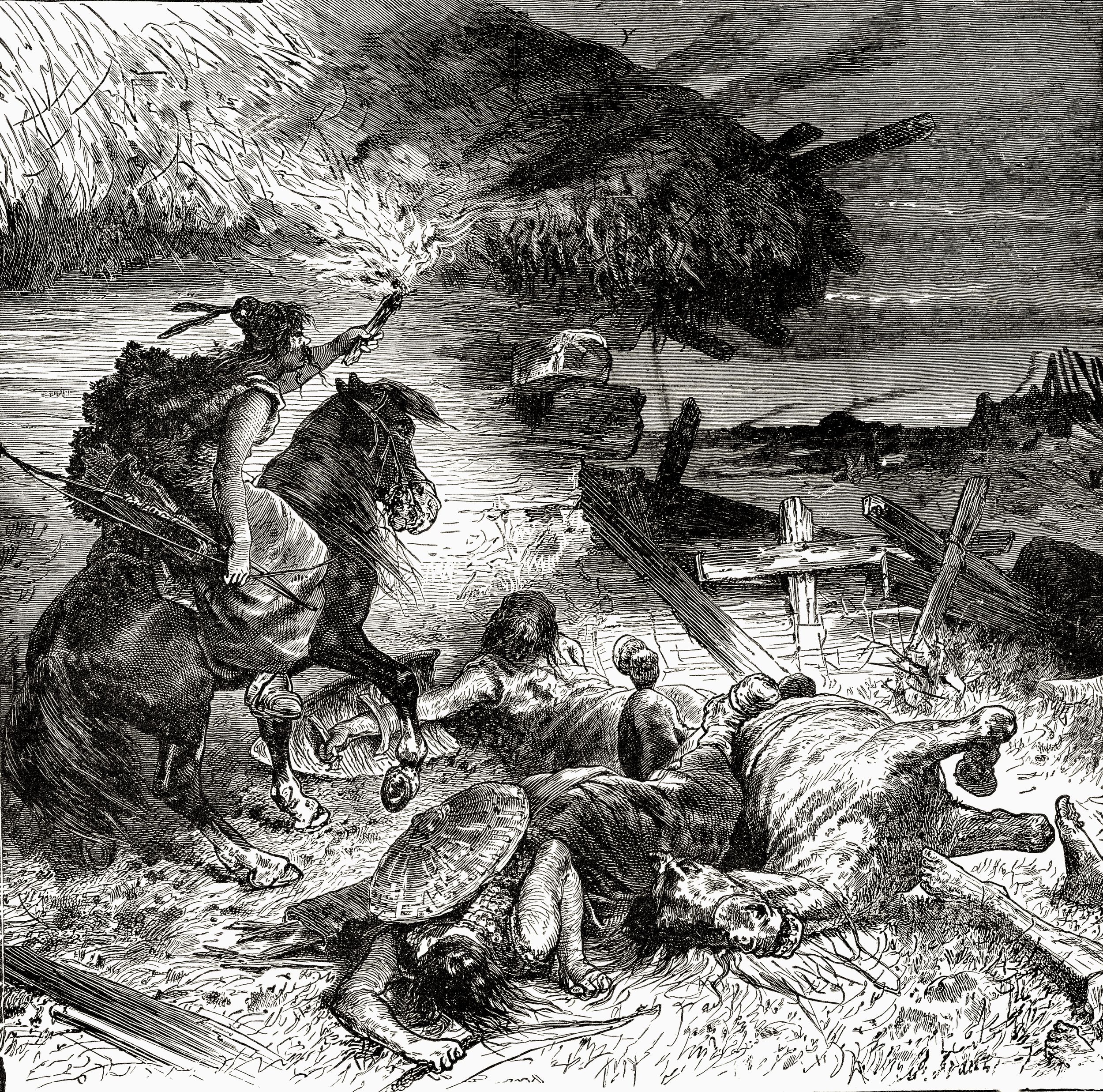
The Huns had little to trade for the luxuries of the sedentary civilizations. The easiest way to get what they wanted was by force. In this they excelled, not by an advantage in numbers but in their inherent martial qualities. Inured to hardships, the Huns were easily mobilized, self-supporting and could strike fast and hard.
Crossing the Volga River, the Huns consolidated their hold over the Alan realm. The unrest and fighting spread west, into the lands of the Ermanaric, king of the Greuthingi. One of the major Gothic tribes, the Greuthingi are commonly known by their later name of Ostrogoths. Between the Don and the Dniester, Ermanaric lorded over a plethora of tribes. Old and weak and unable to stem the Hun tide, Ermanaric took his own life in despair. In a symbolic union of Goths and Huns, the prominent Hun chief Balamber married a Gothic princess. Various tribal factions sought to secure their positions under the Huns while others fled, including the Greuthingi who crossed the Dniester River.
Between the Dniester and the Danube, the Tervingi, later known as the Visigoths, held sway. Their leader, Athanaric, was outmaneuvered by the Huns, who forded the Dniester at night and struck at the Tervingi from behind. Athanaric made a second unsuccessful stand on River Prut. For over a decade, chaos and war raged between the Don and Danube. “The Huns fell upon the Alans, the Alans upon the Goths, and the Goths upon the Taifali and Sarmatians,” wrote Ambrose, the late 4th century Bishop of Milan.
The turmoil spilled over into Roman Thrace in 376 AD when Tervingi refugees crossed the Danube. Abused by corrupt Roman officials, the Tervingi looted Thrace and were joined by bands of Greuthingi, Huns, and Alans. Under their leader Fritigern, the Gothic coalition annihilated the eastern Roman army and killed its emperor, Valens, at the landmark battle of Adrianople in 378.
Valen’s successor, Theodosius the Great, made peace with the marauding barbarians in 382. They became federates, receiving a large stipend and were given land grants. Although his barbarian allies were prone to looting, Theodosius used Huns and Alans to fight the Juthungi who invaded Raetia, and Goths and Huns to smash the usurpers Maximus and Eugenius. When Theodosius died on January 17, 395, the empire was partitioned between his sons. The 18-year-old Arcadius ruled the east, while 11-year-old Honorius presided over the west.
In 395 both the Middle East and the Balkans were subjected to Hun raids. A Hun horde led by Basich and Kursich rode down from the Caucasus, looting its way through Armenia and terrorizing Roman Syria. Jerome, scholar and future saint, fled from Bethlehem in the Judaean Hills to the coast. “The wolves…of the north were let loose upon us from the far-off rocks of the Caucasus, and in a little while overran great provinces,” he wrote. “How many monasteries were captured, how many streams were reddened with human blood. They filled the whole earth with slaughter and panic as they flitted hither and thither on their swift horses. They were at hand everywhere before they were expected…by their speed they outdistanced rumor.”
The Huns then turned east towards Mesopo-tamia, laying waste to the villages of the Euphrates and Tigris rivers up to the gates of the Sassanid capital of Ctesiphon. But the Hun horses and bows, so lethal on the open plains, were impotent against the city walls. When a Sassanid army advanced against them, the Huns retreated back north. Slowed by captives and by pillaging, the disorderly horde was caught by the Sassanids. Holding the higher ground, the Persian archers wreaked havoc on the Huns. Most of the Huns were slain and they lost their loot and captives.
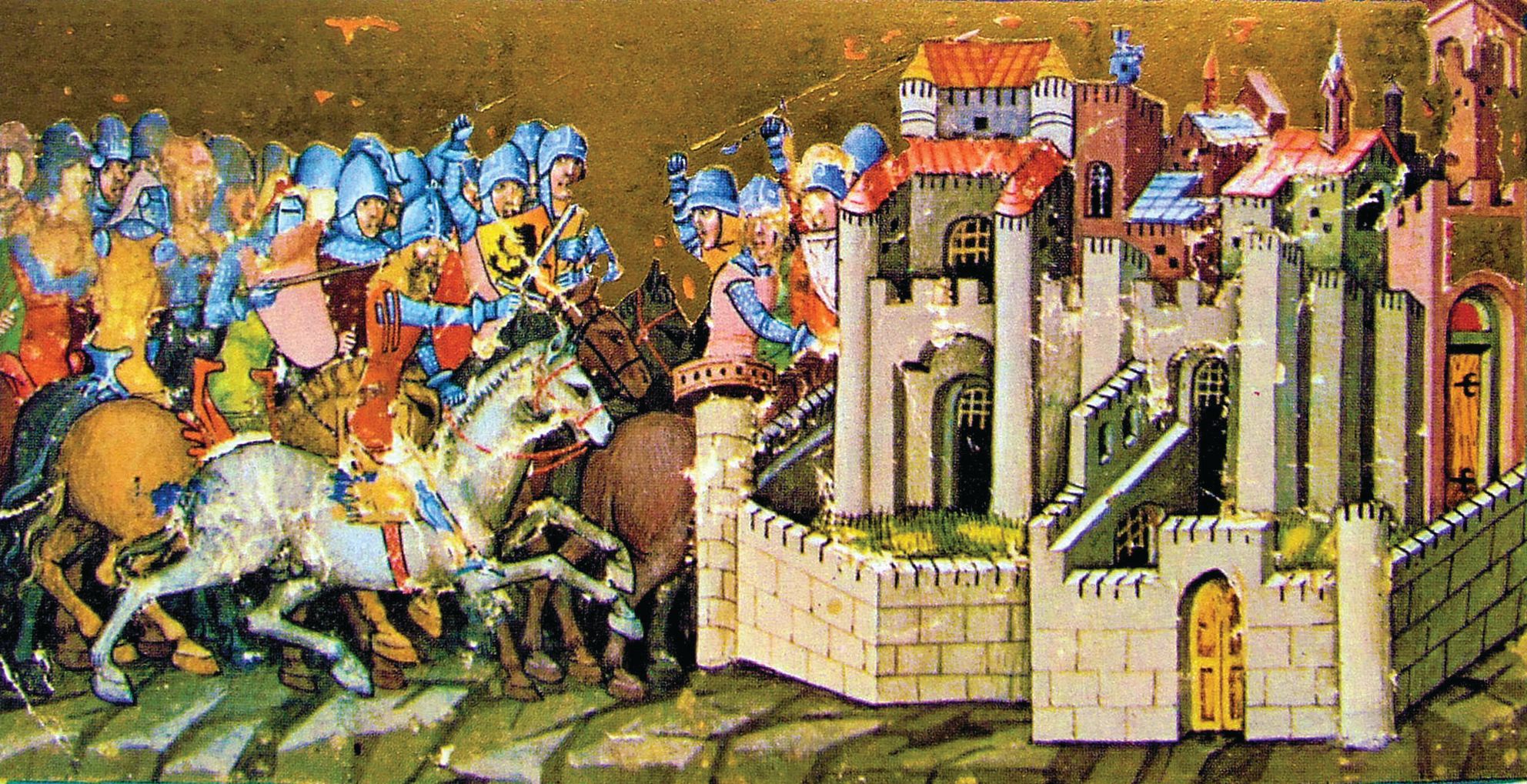
During winter 395, smaller groups of Huns crossed the frozen Danube and raided into Dalmatia and Thrace. Their depredations, however, were minor compared to the mayhem unleashed by the Goths settled within the empire. The inability of the two halves of the empire to cooperate enabled the new leader of the Visigoths, Alaric, to run amok in Thrace and Greece. Alaric stopped the carnage when he was made master of soldiers of Illyricum in 397, but in the years thereafter he would repeatedly invade Italy.
The fifth century opened with a massacre of Goths at Constantinople. Their leader, Gainas, had briefly held the reins of power in the city. Gainas and his Goths fled back to their homelands north of the Danube. However, these were now ruled by the Hun lord Uldin. Flinging his army against the Goths, Uldin suffered several defeats before emerging victorious. Gainas’ head was sent as a gift to Arcadius who concluded a treaty with Uldin.
Nevertheless, in the winter of 404-405 AD, Uldin probed into Thrace. In 406 he was back helping the Romans; albeit those of the western empire. Uldin came to the aid of Stilicho, the master of both services (supreme commander) of the west, who besieged the Gothic leader Radagaisus at Faesulae (Fiesole, Italy).
In summer 408 the Danube garrisons were left in a weakened state. With Roman troops off to fight the Sassanids, Uldin seized the city of Castra Martis (Kula, Serbia) through treachery and pillaged Thrace. Efforts by the prefect of Thrace to negotiate did not impress Uldin. The Hun lord boasted that all the rising sun touches could be his, but what he wanted was more coins not lands. Many of the Hun leaders with Uldin, however, were satisfied with the Roman offers. Those that remained loyal to Uldin were rounded up by the Roman forces, chained and put on a cart to Constantinople. The wily Uldin escaped back north across the Danube where his debacle caused some of the Huns to branch off on their own. One group joined Alaric’s Goths who were advancing on Rome, and others joined the ranks of the Romans defending the eternal city.
In August 408 the half Vandal, half Roman, Stilicho was beheaded at Ravenna. In a purge of foreign troops, Roman troops in Italy massacred barbarian families. The next year Honorius attempted to hire 10,000 Huns to fight the Goths but substantial Hun reinforcements did not arrive until 411. By that time it was too late. In 410 Alaric became the first foreign conqueror to sack Rome in 800 years. Alaric died in the same year; his successor, Ataulf, led the Visigoths to Gaul and Spain.
Fortunately, Honorius found an able general in Constantius. Possibly aided by the belated Hun reinforcements, Constantius took to the offensive and set out to restore order in war ravaged Gaul. Vandals with Suebi and Alans had broken through the Rhine River defenses and from there moved on to Spain. The Franks were in Belgium, and the Burgundians had established a kingdom based in Worms, a city situated on the west bank of the Upper Rhine.
Little is known of Charaton, the prominent Hun leader of this time, other than that he was visited by the Roman envoy Olympiodorus. Notably, the Danube fleet was strengthened in January of 412. Work was also begun on Constantinople’s redoubtable new landward walls, named after Arcadius’ successor, Theodosius II.
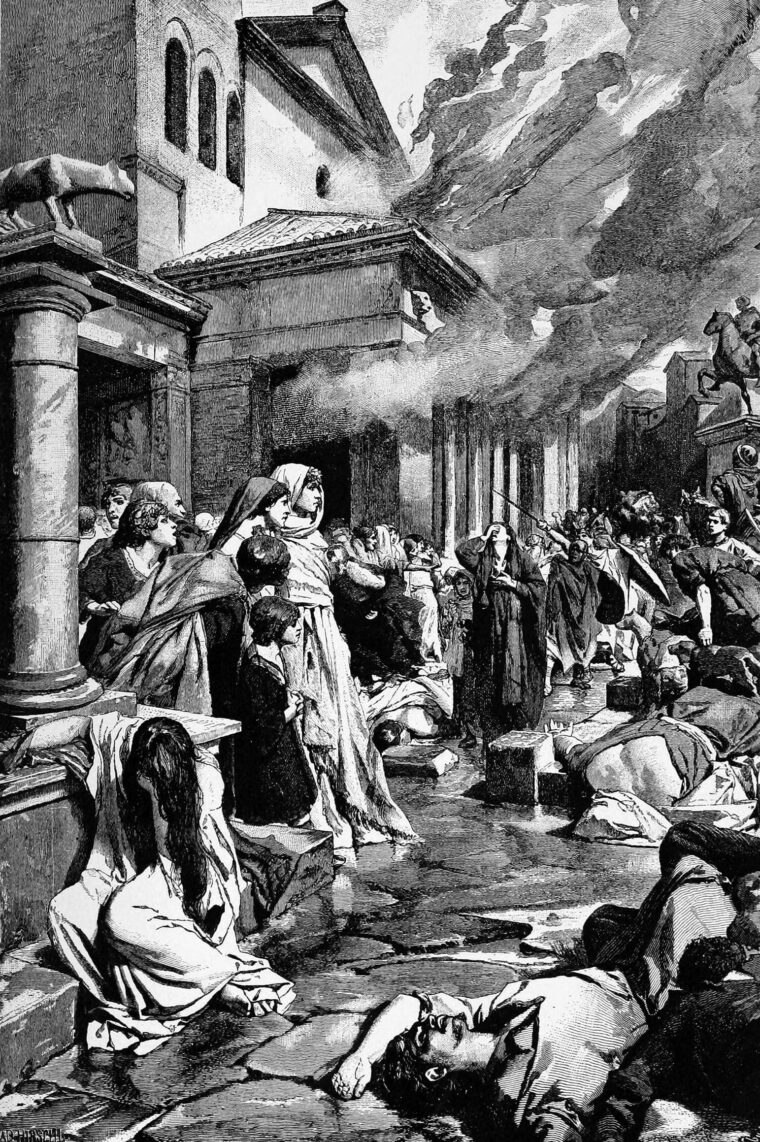
The Huns raided the Eastern Roman Empire in 422 at a time when it was again at war with the Sassanids. The next year Honorius died, whereupon his sister, the redoubtable Galla Placidia, demanded the western throne for her four-year-old son Valentinian. Placidia was at Constantinople where she was backed by Theodosius II. The court in Ravenna, however, instead crowned John, a non-family official. For the next two years, there was civil war.
John hoped that his general Flavius Aetius would procure the help of the Huns. Aetius knew the Huns well. About the same year as the Gothic sack of Rome, Aetius had been given to the Huns as hostage. A formidable warrior and skilled diplomat, Aetius became known as “the last of the Romans.” In 424 Aetius brought chests of gold to Rua and Octar, the joint kings of the Huns. The kings sent a strong detachment of Huns to Ravenna. By the time they arrived, the civil war had already been brought to an end and John had been executed. The Huns attacked Theodosius’ army, which had advanced towards the city, regardless. Aetius pacified his rapacious allies with land grants in Pannonia and Valeria. The child-emperor Valentinian III was crowned at Rome in August 425 with Placidia ruling as regent.
Octar laid waste to Burgundian lands on the Rhine in 430. The Burgundian kingdom petitioned Rome for help but all they got was a bishop who converted them two years later. Nevertheless, instilled with renewed determination and favored by fortune, the Burgundians attacked the Huns just after Octar had died following a night of excessive festivities. The 3,000 outnumbered Burgundians slew 10,000 Huns, wrote Socrates of Constantinople in his Ecclestiastica.
Placidia, meanwhile, had never forgiven Aetius for having sided with the usurper John. In 432, she stripped Aetius off his command as Master of Both Services. Aetius fled to his friend Rua, who outfitted Aetius with a band of mercenaries. Returning to Italy with his Hun allies in 434, Aetius regained his old position.
Rua’s attention was focused on the Danube frontier, where subjugated tribes continued to flee into the Eastern Roman Empire. Rua exacted a tribute of 350 pounds of gold from Constantinople and threatened war if Rome did not hand over the refugees. When his demands were not met, Rua ravaged Thrace in either 434 or 435 where he was killed by lightning during a thunderstorm.
Attila and Bleda (Buda) became the new leaders of the Huns. Both were sons of Mundzuk (Mundiuch), another brother of Rua and Octar. In 435 Attila and Bleda met Constantinople’s ambassador at Margus (Pozarevac, Serbia). The two parties met to discuss terms the Hun way, which was on horseback in contrast to the Roman tradition of sitting. The Huns would keep the peace if refugees were returned, if compensation was paid for escaped Roman captives and if the annual tribute was doubled to 700 pounds of gold.
In the Western Roman Empire, Aetius was preoccupied with the Visigoths and Burgundians in Gaul. Aetius was forced to bequeath Rome’s North African territories to Gaiseric, the Vandal King. Aetius turned to the Huns in 437 for help against the Burgundians. Avenging their previous defeat, the Huns slew 20,000 Burgundians, including King Gundahar, in what was immortalized in the German medieval epic, the Nibelungenlied.
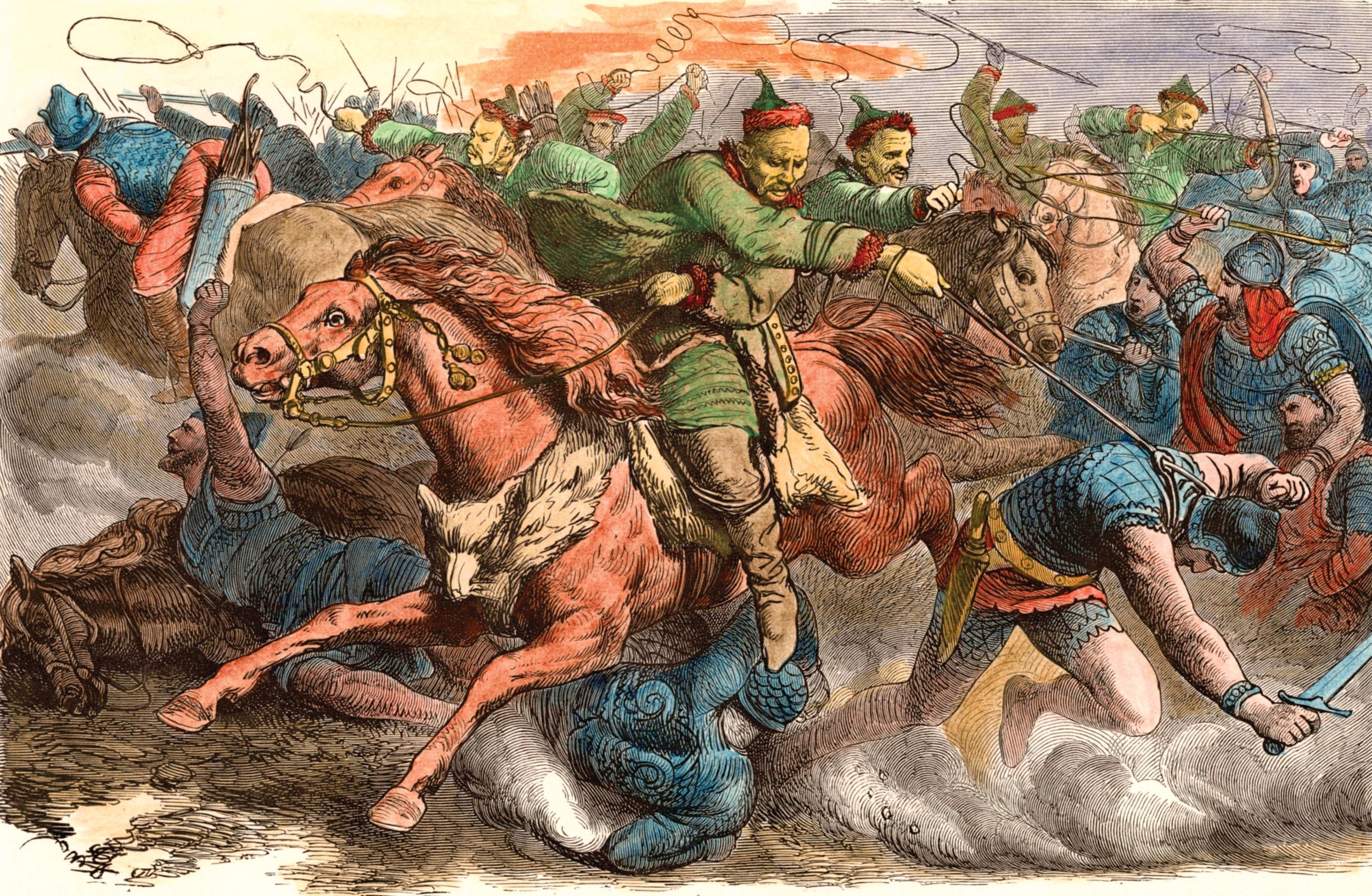
For several years after the Treaty of Margus, Attila and Bleda secured their realm by suppressing unruly tribes and by conquering new ones along the periphery. Hun soldiers were also employed by the western empire against the Visigoths. Litorius, the Master of Soldiers in Gaul, used Huns in 439 against the Visigoths of King Theodoric. Hunic soothsayers used scapulimancy, the practice of divination using the shoulder blades of sacrificial animals, to foretell the future. Their auspices, however, did not prevent Litorius’ defeat outside the Visigoth capital of Toulouse. The Visigoths captured Litorius, and he either died of his wounds while imprisoned or was executed.
In the East, relations between the Roman Empire and Attila deteriorated. Tribute had not been paid, refugees not returned and the bishop of Margus had plundered Scythian tombs in Hun territory. At the 440 trade fair in Constantia, the Roman outpost on the Danube’s northern bank, Huns killed Roman merchants and soldiers. Attila, however, waited until the Danube garrisons were stripped of troops to aid the west against the Vandals. When the Imperial fleet sailed for Sicily in the spring of 441, Attila struck.
Between 441 and 443, and then again in 447, the Huns repeatedly raided into the Eastern Roman Empire. Constantia was probably the first to fall in 441, followed by its sister city of Margus across the river. The terrified bishop of Margus betrayed the city, having secretly reached an agreement with the Huns to spare his life. The bishop lured the city defenders into an ambush, and then opened the gates to the Huns. In what was likely the same campaign, the Huns sacked Viminacium (Kostolac, Serbia), Singidunum (Belgrade, Serbia) and Sirmium (Sremksa Mitrovica, Serbia).
In either 442 or 443, the Huns devastated Ratiara (Archar, Bulgaria), the base of the Roman Danube fleet. From there the Huns likely moved on Naissus on the River Nisava. The Huns crossed a pontoon bridge then brought forth siege towers on wheels. The Huns topped their towers with a platform screened with intertwined willow and rawhide. Enemy missiles stuck in or bounced off the towers. The Hun archers returned fire through arrow slots; however, their siege towers were not high enough to allow the Huns to storm the lofty city ramparts.
The Huns then brought up battering rams. The rams swung from chains fixed to four beams that formed a pyramid-like shape. Wicker and leather screens protected the Huns who heaved the rams back and forth. The massive iron ram heads splintered wood and cracked stone. The defenders countered by dropping huge boulders down from walls. The end came after the Huns clambered up scaling ladders. The Eastern Roman scribe Priscus of Panion (Thrace) wrote years later that bones still lay scattered along the riverbank.
On other occasions, the Huns pressed within 20 miles of Constantinople. “There was so much killing and blood-letting that no one could remember the dead,” wrote Callinicus, a monk from Chalcedon. “They pillaged churches and monasteries…Thrace will never rise again.” In 447 Attila ravaged south into Greece up to Thermopylae.
During the chaotic 440s, treaties were twice agreed upon in an effort to end the warfare. A one-time payment of 6,000 pounds of gold was to be paid to the Huns as well as an annual tribute of 2,100 pounds of gold. The Huns were also ceded a huge swath of land south of the Danube, from Pannonia to Novae (Svishtov, Bulgaria). Constantinople levied heavy taxes to pay for the Hun demands. Forced to sell even their furniture and their wives’ jewels, some citizens were so ruined that they took their own lives. Still, Attila’s extortion was far less than the 9,000 pounds of gold given to Alaric in 408. The Eastern Roman Empire alone had an annual revenue estimated to be 270,000 pounds of gold. Paying the Huns cost less than carrying out a major military campaign against them.
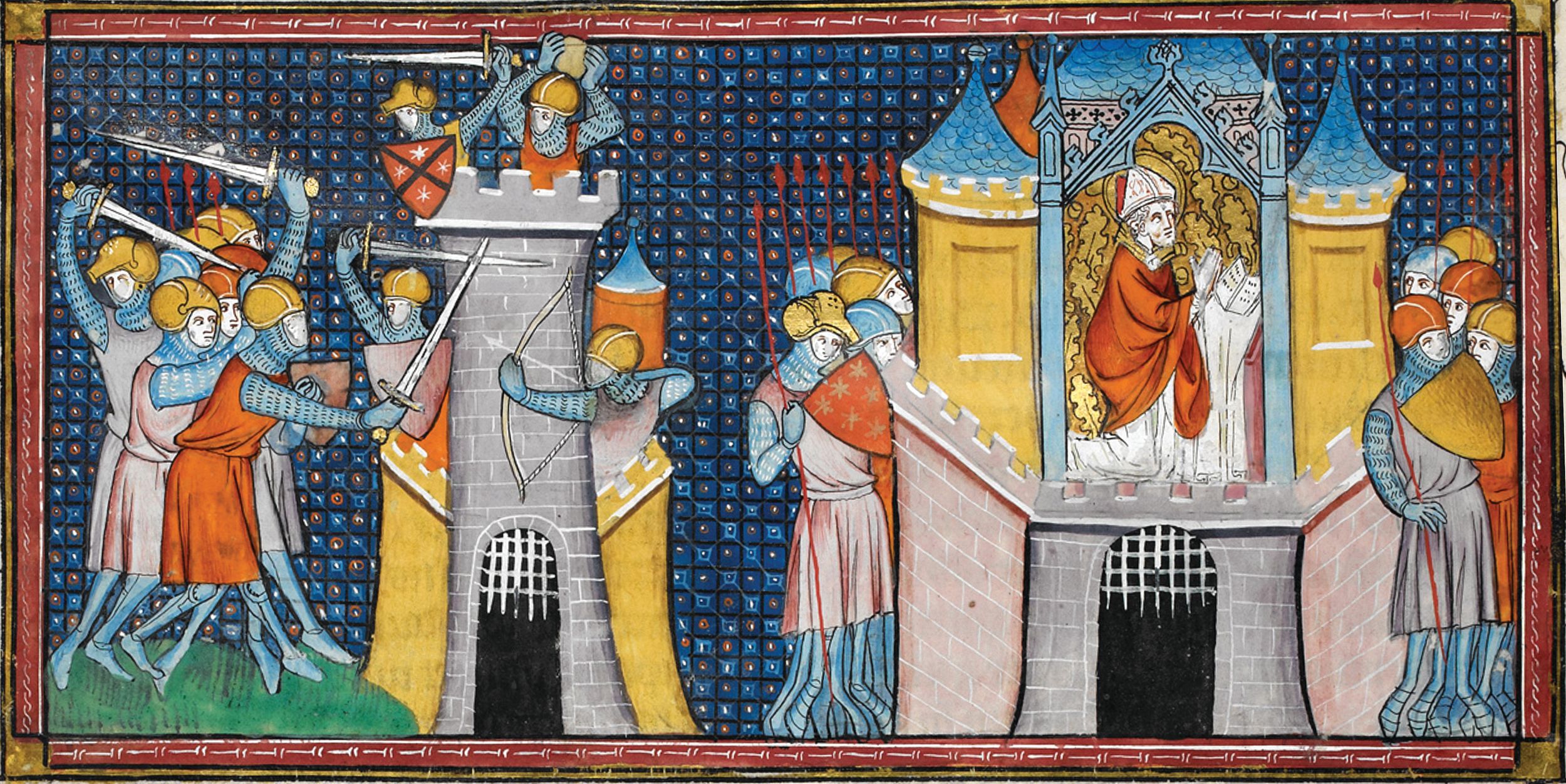
Attila murdered his brother Bleda in or around 445. Under the sole rule of Attila the power of the Huns reached all time highs. His vast tribal empire encompassed the tribes north from the Danube to the Baltic and east towards the Caucasus and the Caspian Sea. Attila’s “picked men,” known as logades, ensured food and tribute were collected; however, the tribes were poor and had little to give. Not only this, many of them were so far away that Attila’s ability to enforce his rule was limited by the vast distances involved. The real wealth was always in the Roman Empire.
So far the Huns had concentrated their raids largely against the Eastern Roman Empire. Constantinople plotted to assassinate Attila in 449 but the plot failed when the assassin lost his nerve. The whole affair ended up with more gold being given to placate Attila. In contrast, thanks to Aetius’ friendship with the Huns, relations with the west remained amiable. A dispute over some loot from Sirmium in 449 seems to have been smoothed over as well. As fate would have it, though, things were about to change.
Honoria, emperor Valentinian’s ambitious sister, desired to be empress herself. This meant she had to marry someone who would overthrow her brother. Honoria’s schemes with a palace steward ended in the steward’s execution in 449. Honoria was betrothed to a dependable senator. Seething with anger, Honoria sought the help of Attila. She secretly sent the Hun king a sum of money and a ring, requesting that Attila prevent her marriage. Attila interpreted Honoria’s ring as a wedding proposal and claimed half of Valentinian’s realm as her dowry. Valentinian was furious. Further demands from Attila were rebuffed.
Theodosius broke his neck on July 28, 450, in a riding accident. The new Eastern Roman Emperor, Theodosius’ brother-in-law, Marcian, was not one to grovel before the Huns. Marcian canceled the tribute paid to Attila and taunted the Hun king. Let Attila try to come and steal more; if he did so, Marcian would meet him with larger forces than Attila could muster. Perhaps it was Marcian’s show of bravado, which further convinced Attila to keep focused on the west. Attila kept his potential adversaries in the west guessing as to his true intentions. Changing his tune towards Valentinian, Attila sent the message that he would be striking at Rome’s old foes, the Goths. In contrast, Attila reminded Theodoric that their mutual enemy was Rome.
Early in 451 Attila’s army set off on its march towards Gaul. In its ranks there were Gepids under Ardaric from Transylvania, Rugians from the upper Tisza, Scirians from Galicia and Longobards (the future Lombards) from the Elbe. Ostrogoths under Valamir had come from their settlements south of the Danube and Herulians, Alans and Akatziri from the Black Sea steppes. Altogether Attila’s army was probably several tens-of-thousands strong, exaggerated by chroniclers into a fantastic half a million men.
Attila felled trees in the nearby forest to construct boats for crossing the Rhine. Burdened with siege and supply wagons, the Hun army rumbled along at about 12 miles a day. Villagers fled for their lives and abandoned the countryside. On April 7 the Hun rams battered the gates of Metz. The next day the city fell to Attila. Buildings and people were consumed by flames, blood spurted from slit throats. Other cities to feel the wrath of the Huns were Strasbourg, Worms, Trier, and Rheims. At Rheims the Huns allegedly cut off the head of the prelate Saint Nicasius whilst he was singing Psalm 119. A detachment of Attila’s army ravaged Belgium as Attila took sides in a dynastic dispute among the Ripuarian Franks. Attila bypassed Paris, which was too small to merit his concern. His eyes focused on prosperous Orleans.
From his seat at Arles, Aetius hurriedly mustered his allies. The Franks, Burgundians, and Celts of Armorica furnished help, but it was not enough. Aetius needed the Visigoths of Aquitaine. “Bravest of nations, it would be prudent of you to combine against Rome’s oppressor, who wishes to enslave the whole world,” Jordanes recounted that the Goth-friendly senator Avitus told Theodoric. “Romans, you shall have what you desire,” Theodoric replied. “You have made Attila our foe as well.”
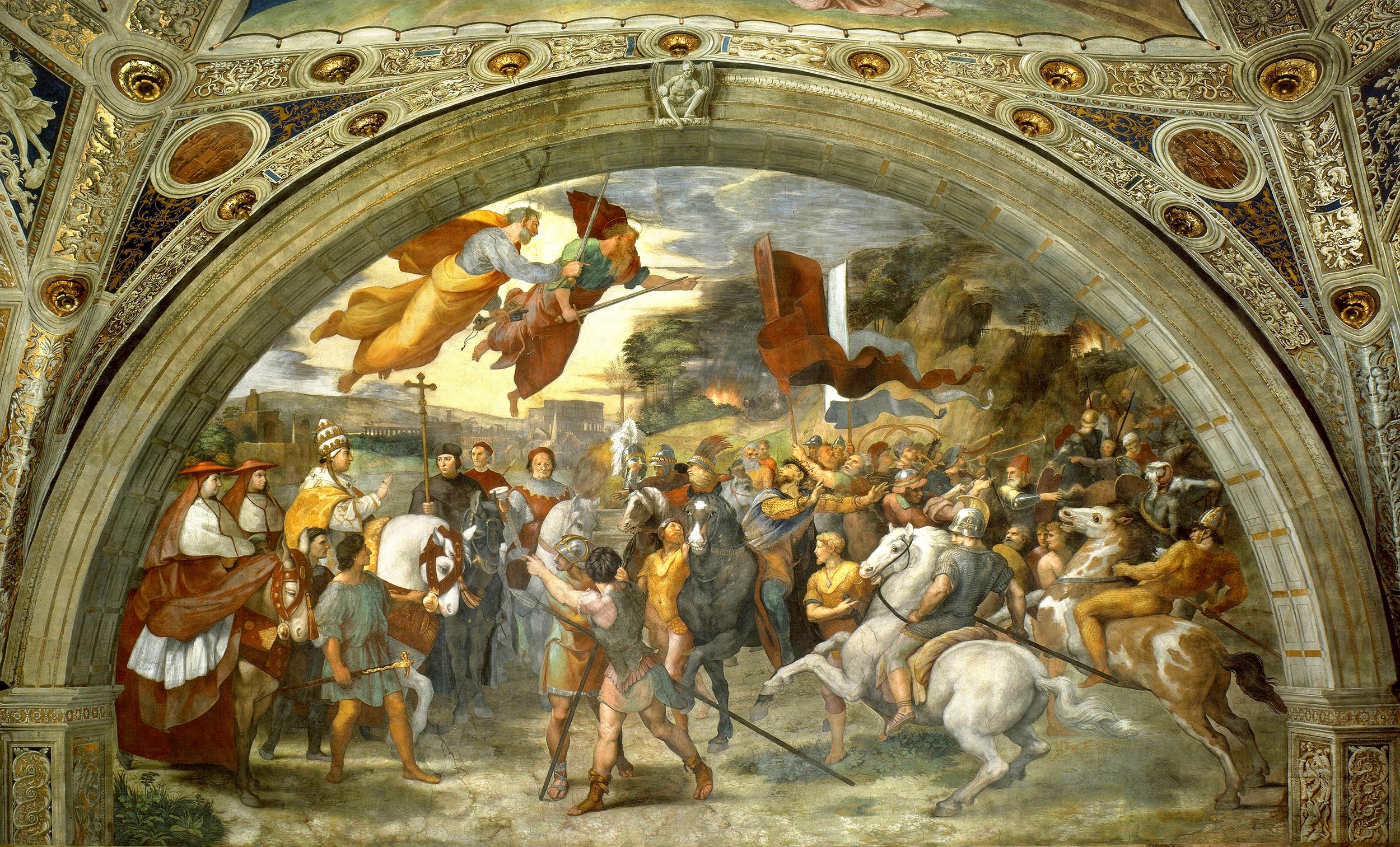
Attila arrived at Orleans in early May. What happened next is unclear. Ecclesiastical tradition accredits Anianus, the bishop of Orleans, for saving the city. According to the hagiography of Anianus (Saint Aignan), Anianus had implored Aetius to hasten to Orleans’ relief before June 14, otherwise “the cruel beast shall tear it to pieces.” Anianus boosted the morale of the besieged city by carrying holy relics around the battlements. A storm blew up and delayed Attila’s final assault for three days. Still no help arrived. Despite all the prayers, the end seemed assured. Orleans surrendered unconditionally on June 14 and opened its gates.
The Huns were entering in triumph when a dust cloud appeared in the distance. Roman eagle standards were seen gleaming in the sun, at their side the embroidered banners of the Goths. Aetius and Theodoric had arrived in the nick of time. Anianus’ cry “It is the aid of God” was taken up by the populace. As written in the Vita Aniani, the Huns were “driven from street to street, beaten down by the stones hurled at them by the inhabitants from the roofs of houses.” In contrast, the account of Gregory, Bishop of Tours, describes the Romans and Goths arriving just before the Huns breached the walls. In Jordanes’ account, Aetius and his allies arrived at Orleans before Attila, where they joined Sangiban, leader of a band of Alans who resided in the woods near the city. Seeing the city thus defended, Attila retreated.
What is certain is that Attila was unable to take Orleans. Attila fell back towards Troyes, where he allegedly told its Bishop, (Saint) Lupus, that he, Attila, was the Scourge of God. More likely this was a Christian invention, which viewed Attila as an instrument of God’s punishment for the sins of mankind. Attila spared Troyes but took Lupus hostage. With Aeitus and Theodoric in pursuit, Attila prepared for the decisive showdown north of Troyes on the Catalaunian Plains.
On June 19 the Gepids of Attila’s rearguard engaged the Franks of Aetius’ vanguard. Fierce fighting lasted until nightfall. With the rising of the sun on June 20, the armies formed up for the main battle. Attila consulted his shamans, who not only foretold the doom of the Huns, but also that one of the enemy leaders would die. Attila was sure that leader was Aetius. He therefore avoided battle until the middle of the afternoon. Attila reckoned that, in the event of the prophesied defeat, the impending darkness would allow his army to escape.
Attila and his Huns held the central position of his battle line. Ardaric and his Gepids made up the right wing, Valamir and his Ostrogoths the left. The wagon laager was positioned behind with its back to a river. Facing Attila across the gently undulating plain, Aetius commanded the left wing, Theodoric with his son Thorismund the right, and Sangiban the center.
“On then to the fray! Let courage rise and fury explode!” Attila called to his troops, wrote Jordanes. At the onset of the battle, each side sought to gain possession of a small strategic hill. Thorismund’s cavalry got there first and sent the Huns reeling back. The Hun archers failed to arrest the advance of the enemy, which pushed Attila’s formations towards the wagon laager. A shallow stream across the plain ran red with blood. King Theodoric was thrown off his horse. He was either trampled or slain by the spear of Andag the Ostrogoth, although many doubted Andag’s claim.
Dusk fell upon the land as Thorismund fought his way towards Attila’s guard. A blow on the head toppled Thorismund from his steed and he too nearly perished, if not for the timely rescue of one of his men. Night put an end to the fighting. Men from both sides wandered over the corpse-littered battlefield, looking for missing friends and comrades. Each side probably lost a third of its fighting strength.
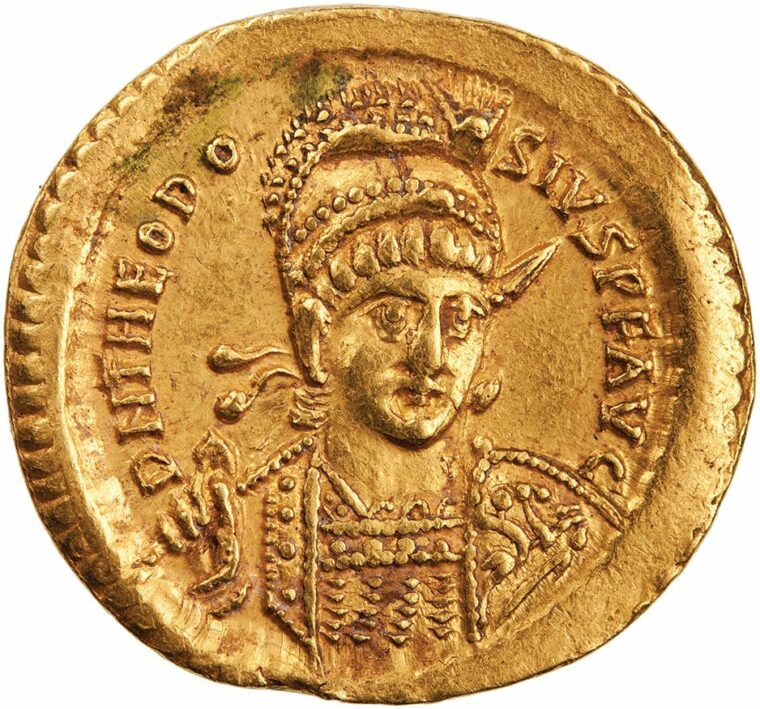
Daybreak found Attila pacing back and forth like a wounded lion. His troops blew their trumpets and clashed their arms. Weary of what their enemy was still capable of, the Romans and Visigoths kept up a missile barrage from their fortified lines. Attila thought his end was near and had a funeral pyre prepared for himself. But it was Theodoric who got the hero’s funeral, carried in a procession by his sons and buried with ritual laments.
Thorismund wanted to finish Attila off, but Aetius feared that without Attila the Goths would become too powerful. He convinced Thorismund to swiftly return to Toulouse to secure the Visigoth throne. Attila withdrew his army back towards Hungary. Traditionally considered one of the decisive battles in European history, Attila’s defeat on the Catalaunian Plains was his first, last, and only one. Attila was determined to renew his attack on the Western Roman Empire.
By late June 452 the Huns were back on the offensive and at the walls of Aquileia on Italy’s northeastern frontier. The siege dragged on into August when Attila smashed his way into the city with stone throwing slings, giant scorpion crossbows and battering rams. Sacking Aquileia, Attila bypassed Ravenna and went on to ravage the cities of the northern Po valley. In Milan the Huns were so busy with the looting that the population had time to flee. Attila’s shamans warned Attila that he would share Alaric’s fate.
A delegation headed by Pope Leo I arrived to reason with Attila on the shore of Lake Garda. “[Attila] was so flattered by the presence of the highest priest” that he promised peace and returned home,” wrote the chronicler Prosper. In reality, Attila’s compliance was a pragmatic one. Attila invaded northern Italy at a time of a failed harvest. His famished and weakened men fell victim to outbreaks of diarrhea and dysentery, exacerbated by the summer heat. News arrived from the East that Marcian was raiding into the poorly defended Hun lands. Marcian had also sent reinforcements to the western empire, enabling Aetius to mount counterattacks.
In 453 Attila, who was in his mid-50s, married Hildegunde, a young Germanic princess. Heavy with drink and food, Attila collapsed into sleep after the wedding feast. Suffering a hemorrhage, Attila suffocated while in drunken stupor. The great Hun king was buried with iron, silver, and gold, which symbolized his weapons and loot. Attila had numerous wives and sons, but he had left no provisions for his succession. Attila’s sons, Ellac, Dengizich, and Ernakh, divided the empire. The Hun vassals saw Attila’s death as an opportunity to rid themselves of their overlords. Led by Ardaric the Gepid, the Gepids and Goths shattered the Hun supremacy in an epic battle by the Nedao (Nedava) River in 454 or 455. Thirty thousand of the Hun army were claimed to have fallen, including Ellac who fought with honor.
For a while, the Huns retained a foothold on the Black Sea coast and on the Serbian-Bulgarian border. The latter enclave suffered another defeat at the hands of the Goths. Dengizich crossed the frozen Danube in 467 in an attempt to settle his famished people among a community of Goths. Dengizich desperately appealed to the local imperial commander, Anagastes.
Although the Emperor Leo I replied favorably to the Huns, Anagastes ended up siding with the Goths who turned on the hapless Huns. The fighting lingered on until 469, when Dengizich was killed and his head delivered to Constantinople. The remaining Huns merged with other tribes, particularly those of the Bulghars.
Arising from their shrouded Xiongnu origin out of the eastern steppes, the Huns’ advance into Europe set in motion the Wandering of the Nations and hastened the downfall of the Western Roman Empire. While they were still nomads, the deadly horse-archery and mobility of the Huns enabled them to win spectacular victories against other tribal peoples.
Attila became the greatest barbarian king of his age; however, unlike the Goths, Vandals, Franks, and others, the Huns never succeeded in establishing a significant foothold in the empire. Neither did the Huns ever inflict a decisive defeat on a major Roman army, nor did they ever sack Rome.
After their settlement in Hungary, the Hun’s reliance on vassal troops eroded their advantage against their opponents. They failed to win over subjected populations and refugees continued to flee into the Roman Empire. When the Hun leadership fractured after Attila’s iron rule, the conquered turned on their oppressors and annihilated them without mercy. The greatest legacy of the Huns remains the terror they spread, but their histories were written by their enemies and in retrospect, they were no more terrible than other so-called barbarian tribes or the Romans themselves.
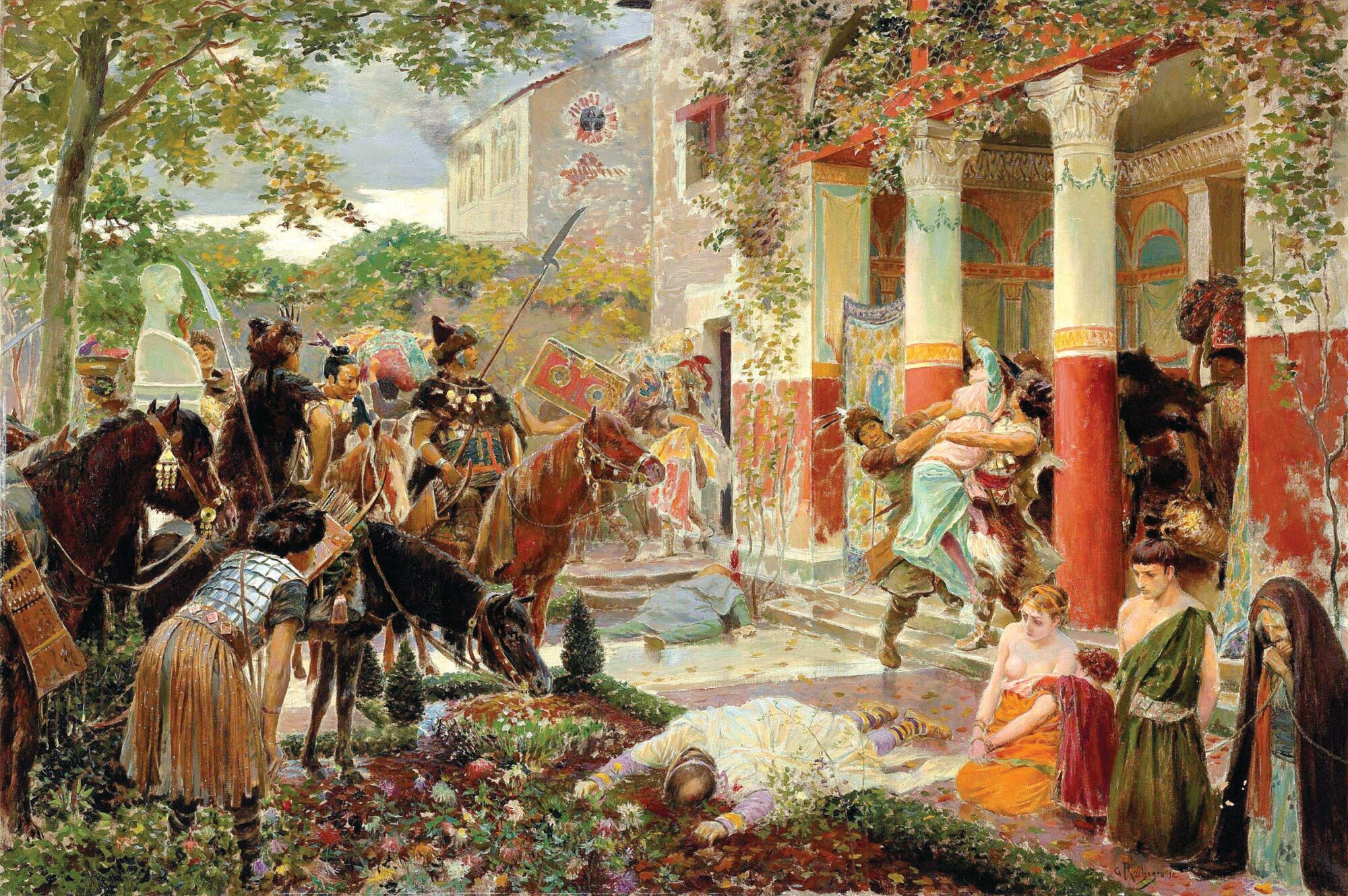
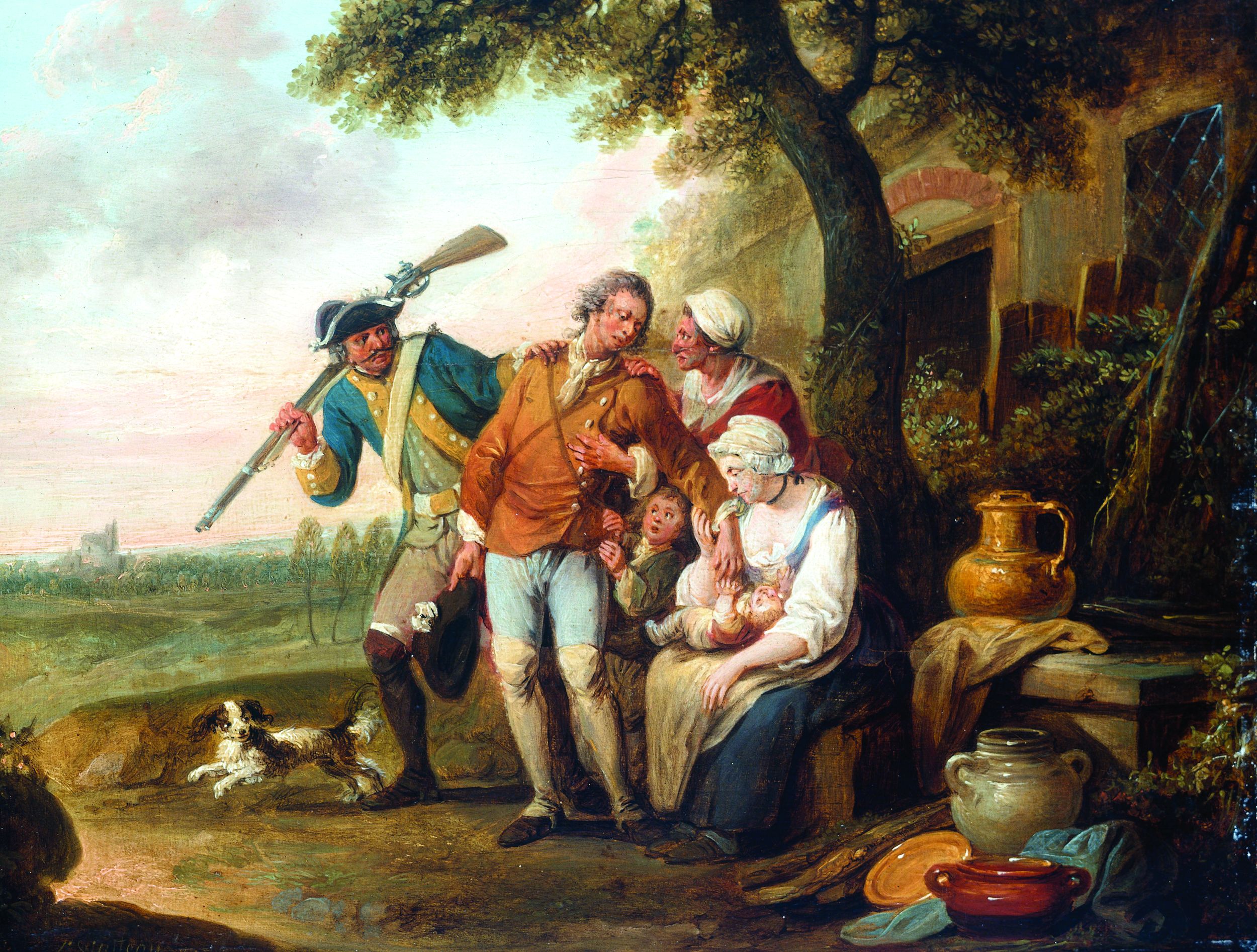

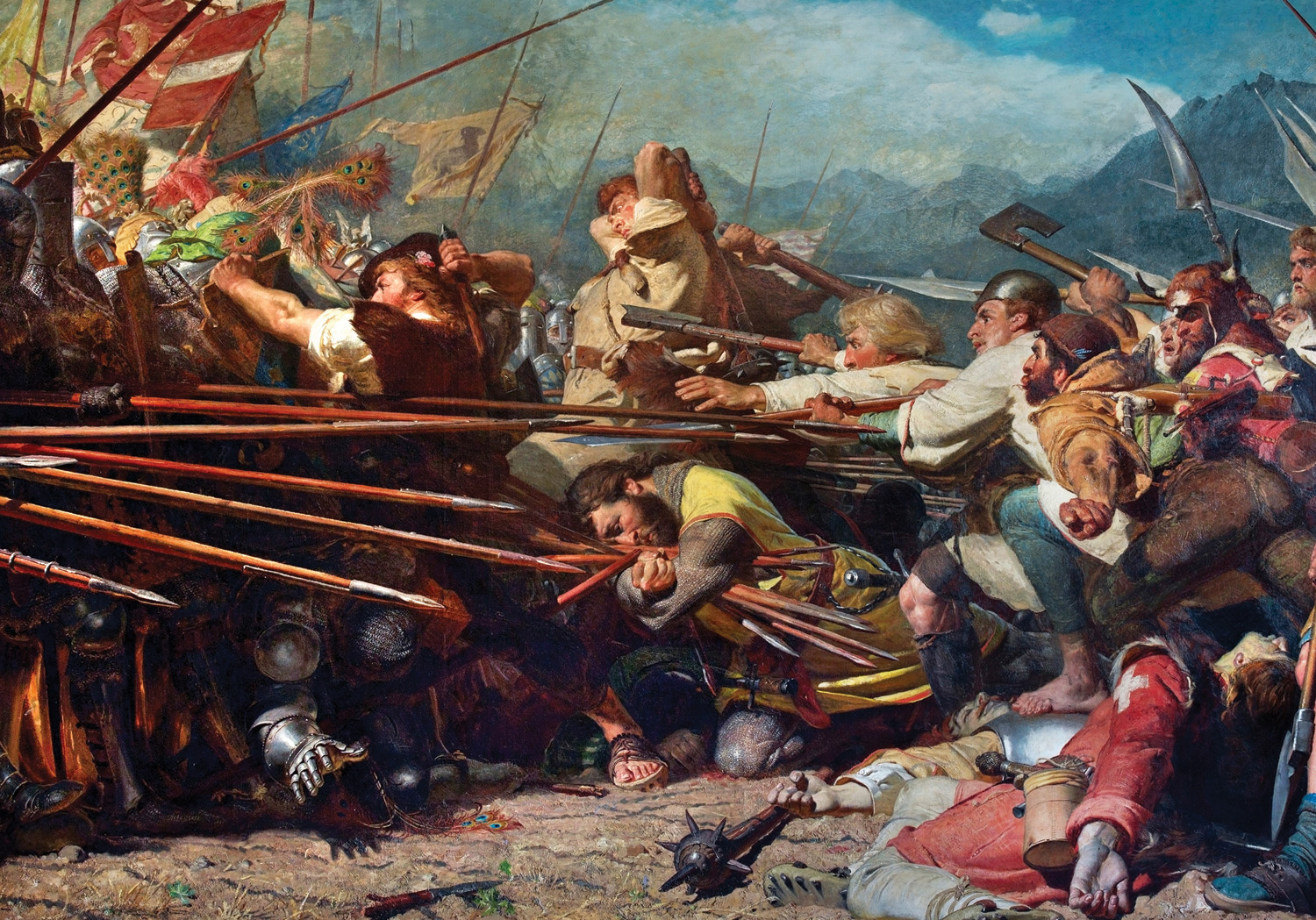


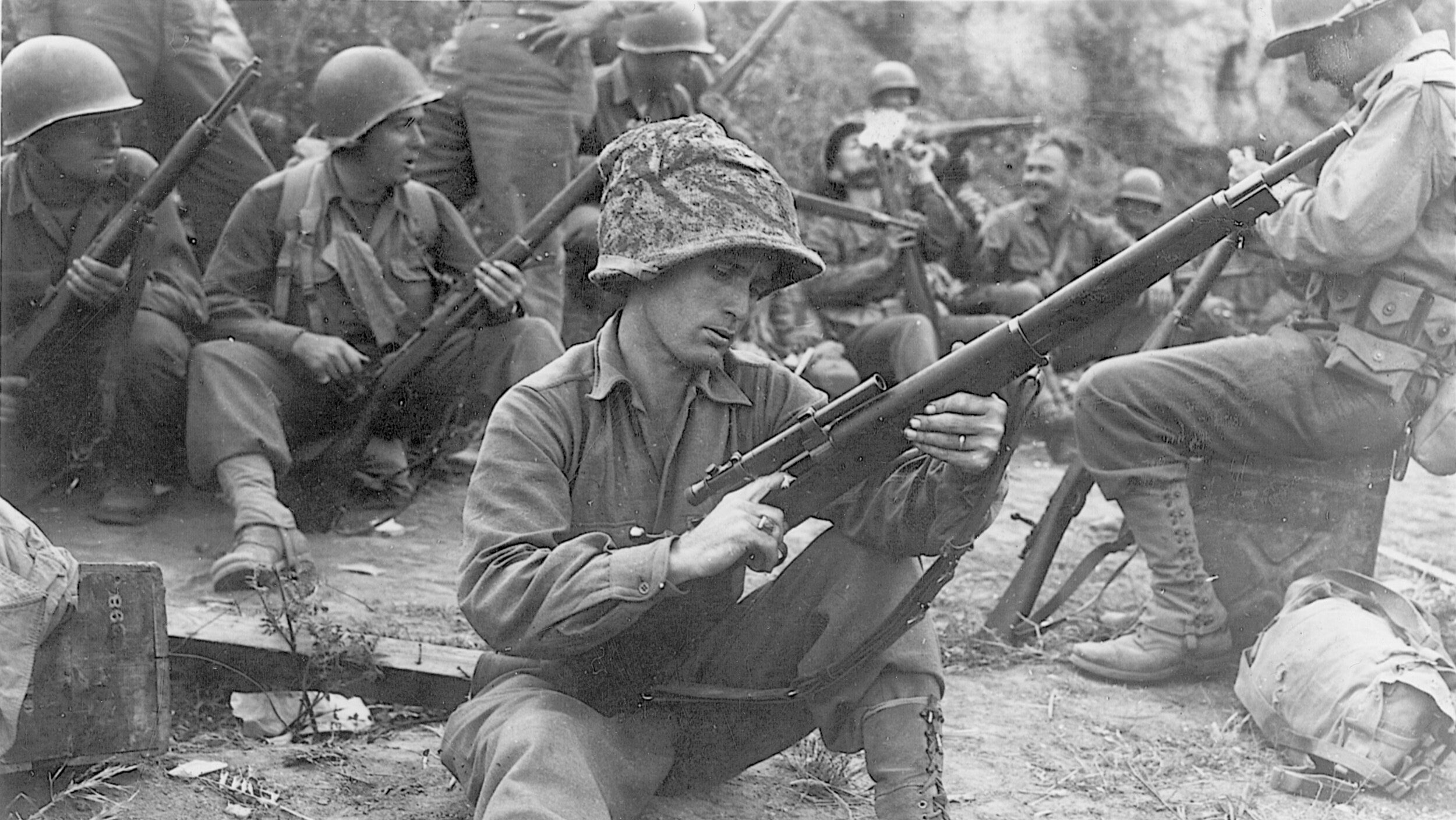
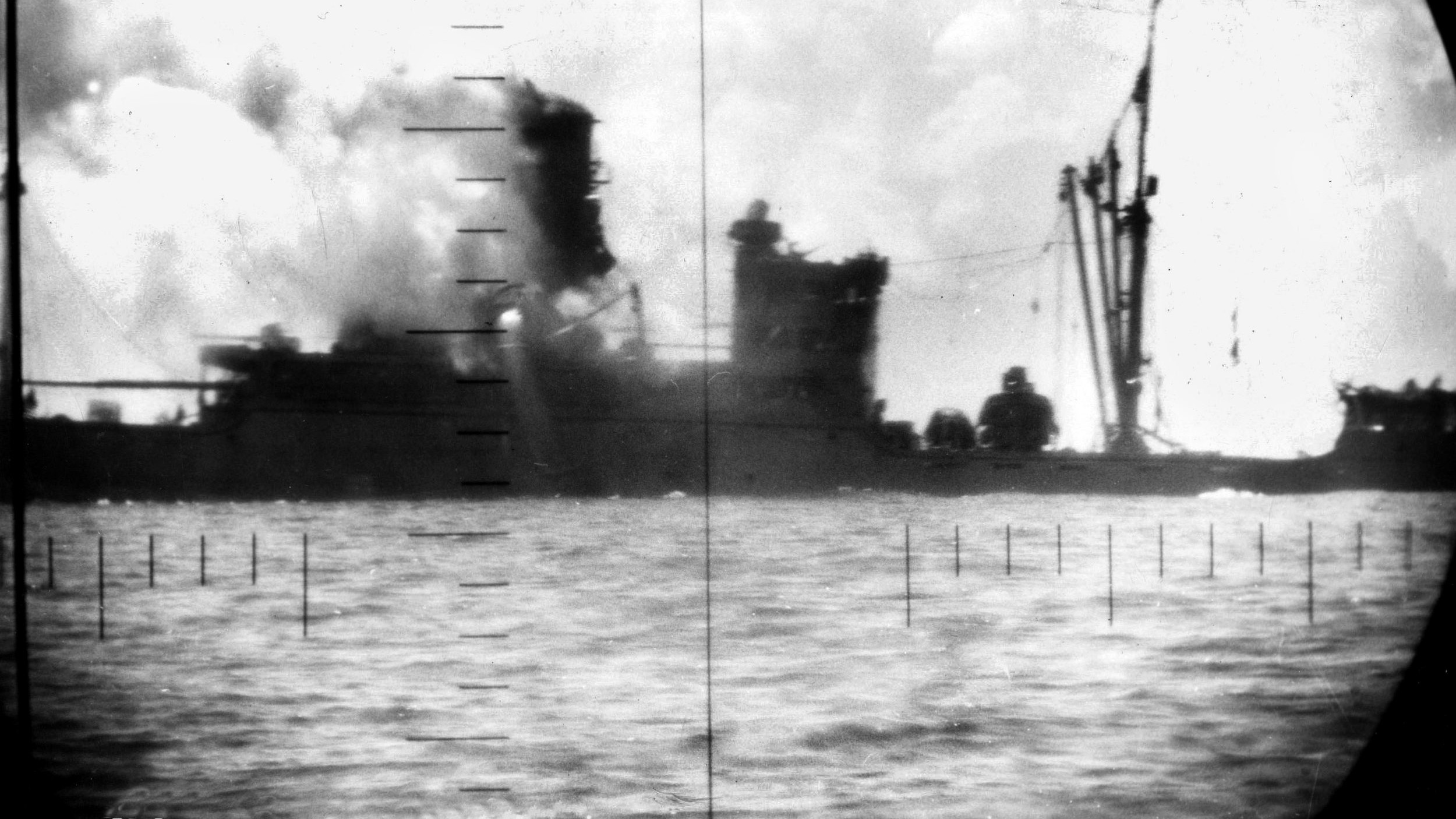
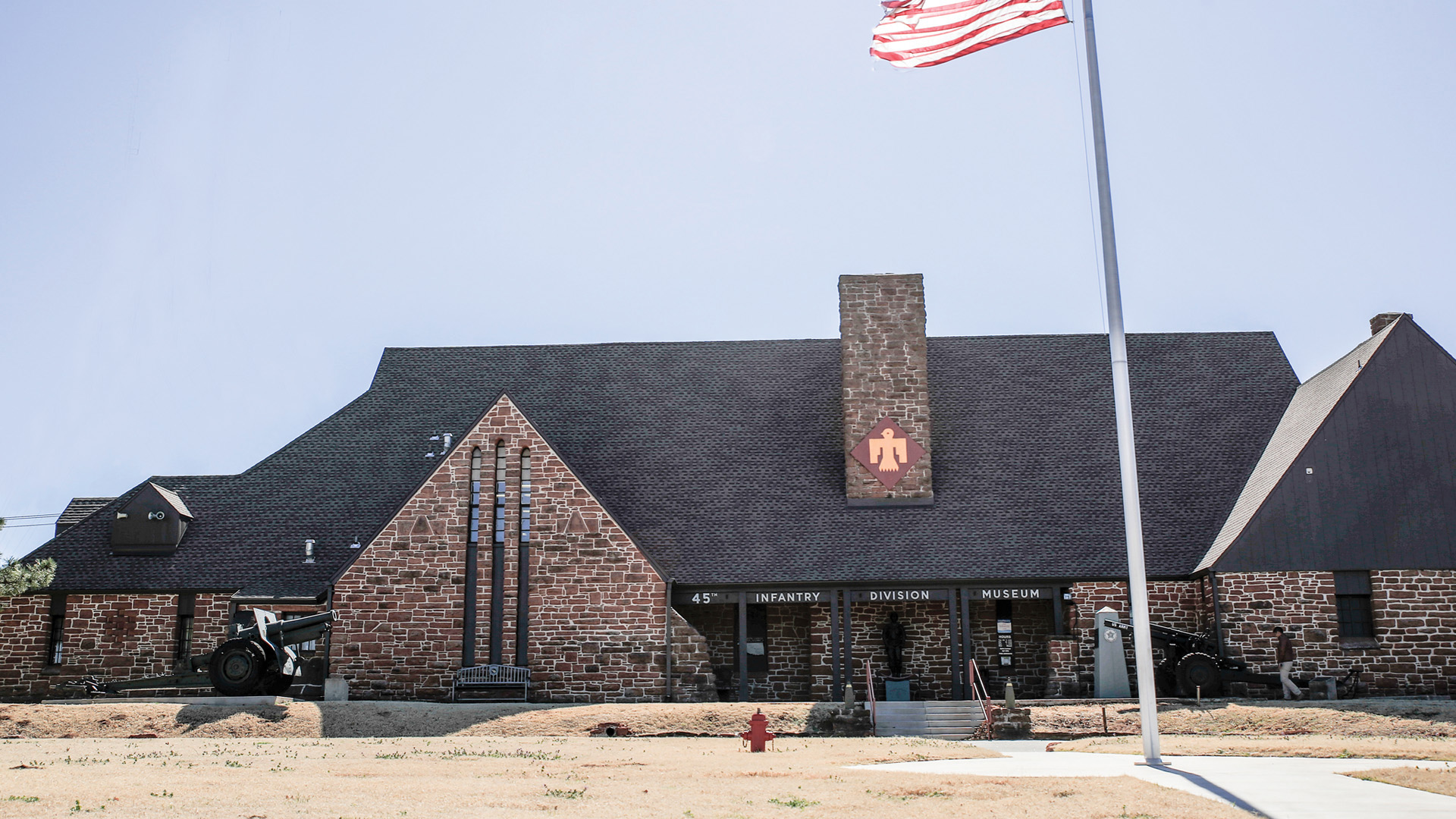
Join The Conversation
Comments
View All Comments